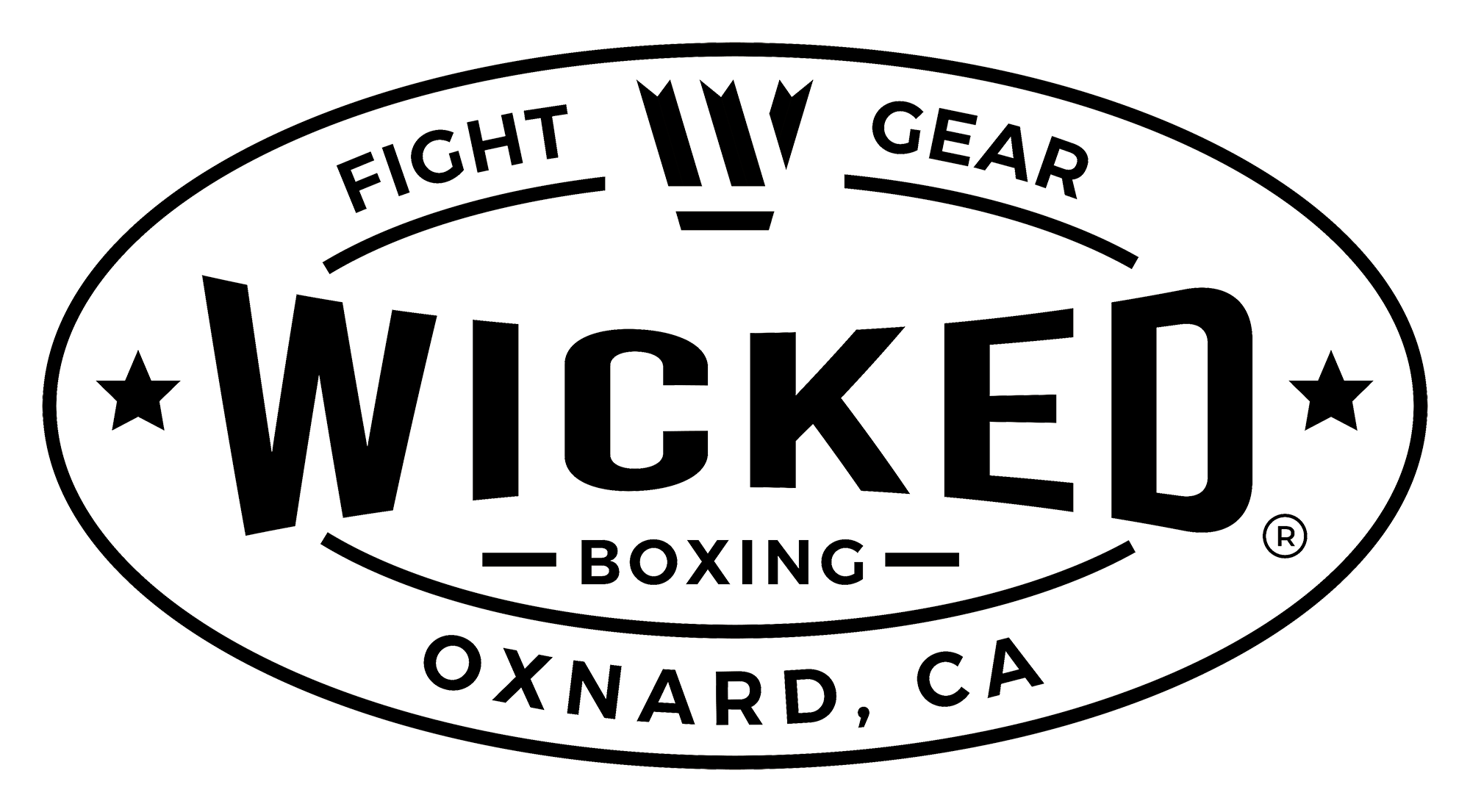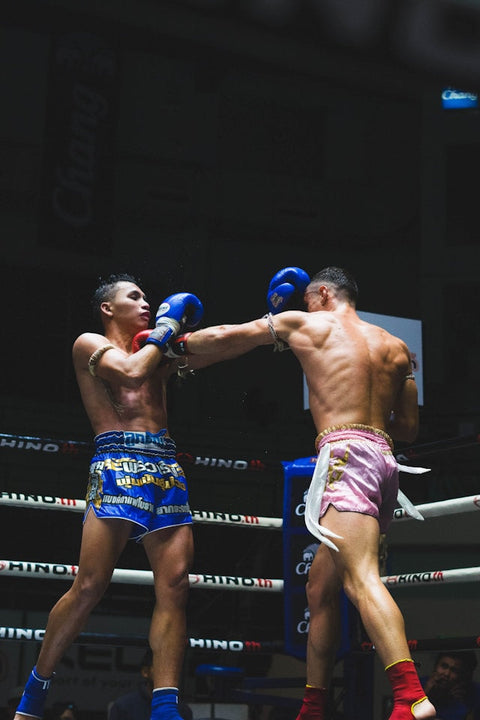Muay Thai vs. Kickboxing: A Guide
The difference between Muay Thai and Kickboxing is an ongoing debate. The terms are usually used interchangeably by some while many argue they are different forms of sport. Both are types of martial arts, traditional and modern respectively but have very distinctive identities.
At Wicked Boxing, the goal is not just to familiarise you with the facts but also provide you with required equipment to support your passion and training equally. Whether you’re a pro or just getting started, this guide will help you understand all the peculiarities of Muay Thai and Kickboxing and the right gear for it so you can train hard and perform better.
Muay Thai: An Insight
What is often known as the ‘art of eight limbs’, Muay Thai is a traditional form of martial art originating from Thailand and carrying decades of history within itself. Muay thai, unlike other forms of boxing, uses an 8 point of contact system consisting of:
-
Fists for punches
-
Shins for powerful kicks
-
Elbows for short-range strikes
-
Knees for powerful strikes
It also involves clinching techniques where the combater controls the opponent’s posture to transfer from stand-up combat to ground combat. A mix of all these techniques makes Muay Thai one of the most versatile yet strenuous fight sports.
It is important to learn that Muay Thai training requires fighters to use highly professional and protective gear that can readily absorb recurrent blows and impact. For example: padded gloves, shin guards and sport specific clothing such as shorts.
At Wicked Boxing, all Muay thai-specific gear is designed keeping in view the prerequisite nature of the sport.
Kickboxing: What Is It?
Kickboxing, as the name suggests, is a rather modern and hybrid form of combat that combines boxing punches with karate kicks. The major difference between muay thai and kickboxing is that kickboxing does not allow using elbows or extended clinching.
Several forms of kickboxing are:
-
American kickboxing: uses powerful strikes only allowed to be hit above waist level.
-
Low Kick Kickboxing: allows leg kicks, punches and high kicks in a full ring.
-
K-1 Kickboxing: performed with punches, kicks and knee strikes. However, no elbows or prolonged clinching is allowed.
Kickboxing is based on speed more than any other aspect hence the gear must be lightweight allowing swift movement of the fighter.
Wicked boxing’s range of kickboxing equipment includes kickboxing gloves, wraps and shin guards that can be beginner as well as professional friendly.
Key differences between Muay Thai and Kickboxing
Attack technique
-
Muay thai: Fist punching, kicks, use of elbows and knees and clinching.
-
Kickboxing: A blend of punches and kicks. No elbows to be used.
Position and movement
-
Muay Thai: Standing upright, major focus on power blows and incorporates shins and clinching.
-
Kickboxing: Diagonal stance, high speed foot-work combined with punches and kicks.
Gear Requirement
-
Muay Thai: High impact absorbing gloves, thick shin guards and flexible shorts for ease in clinching.
-
Kickboxing: Lightweight gloves, shin guards for kicks, slim and compact shorts.
Even though the essential gear for both sports is fundamentally the same, it differs in design. Which is exactly why Wicked Boxing designs need-specific equipment so the choice becomes easier.
Origin of Muay Thai and Kickboxing
Muay Thai
Muay Thai dates back to Thailand’s warfield tricks and techniques. Over time, what was once limited to the battlefield, has now become a ring sport and consequently Thailand's national sport. It is in practice in all parts of the world today especially after its popularity in the Mixed Martial Arts competitions, widely known as MMA.
Kickboxing
The history of kickboxing is quite recent. In the years 1960-1970, Japanese gave birth to this new form of combat that consisted of a blend of karate and boxing. This style was then named kickboxing which gained popularity over continents. Muay Thai and Kickboxing were eventually combined, giving rise to Dutch-style kickboxing which is now quite popular in competitions like K-1.
Although both combats have had an influence on one another yet their basic differences in strike as well as gear needs remain.
Are Knees Allowed in Kickboxing?
One of the most frequently asked questions is about the involvement of knees in the sport. To answer the question, let’s break it down according to type of kickboxing.
-
American Kickboxing: No use of knees allowed.
-
Low Kick Kickboxing: similar to American Kickboxing, no knees.
-
K-1/Dutch Kickboxing: although knees are allowed, clinching is not to be prolonged.
-
Muay Thai: knees are an important aspect especially in clinching.
Forms of Kickboxing and Gear Requirement
-
Contact Kickboxing: consists of punches plus high kicks. Gear should be lightweight gloves and safety pads.
-
Low Kick Kickboxing: with the addition of leg kicks, shin guards are vital.
-
K-1/Dutch Style: knees involved provided they are protected by gloves and pads.
Wicked Boxing is your platform for easy and versatile access to A-grade gear such as gloves, training pads for sparring and bag work etc.
Usual Boxing vs. Kickboxing: Comparison
A common query also points towards boxing and kickboxing differences.
-
Boxing: is a game of punches only. Its requirement is high quality, impact absorbing boxing gloves, hand wraps to keep the hand in position and focus mitts.
- Kickboxing: is a blend of punches and knee kicks. The required gear includes shin guards, kick shields and flexible clothing like shorts along with boxing equipment.
Regime differences: Muay Thai and Kickboxing
The conditioning also is through distinct approaches in Muay Thai and Kickboxing
-
Muay Thai training: emphasizes on shin control, clinching technique training and endurance building with drills involving bag rounds and pad work.
-
Kickboxing training: major focus is towards speed training through multiple drills, footwork and combining punching and kicking swiftly and strategically.
However, if one thing is common between the both, it is the need for specific protective gear that Wicked boxing proudly specializes in. High quality hand wraps can help prevent injuries during punch exchange while shin guards are designed to safeguard against bone on bone clashes.
Wicked boxing: Trustworthy and Reliable Gear
Here is why wicked boxing is an athlete’s best choice:
-
Specialized products by experts for all kinds of sport from Muay Thai to Kickboxing and Simple Boxing.
-
High quality, tested gear that is designed to withstand vigorous regimens.
-
Wide range for fighters of all levels, from beginner to expert.
-
Trusted and chosen by those who prioritise safety and top class performance
The comparison between Muay Thai vs. Kickboxing requires the right gear as much as the technique.
Final thoughts
The difference between Muay Thai and Kickboxing lies in gear, rule and game strategy. Muay Thai’s eight limb clinching and Kickboxing’s punches and karate kicks can be learnt better if you have the right equipment for it.
Gearing up smart ensures your confidence and game strategy shines in the ring while keeping you safe. Which is exactly why athletes all over the world trust Wicked Boxing. These aren't just gloves, shin guards or protective pads, they are your key to unlocking fine martial arts.
Get ready with Wicked Boxing today and let your equipment make the difference.




